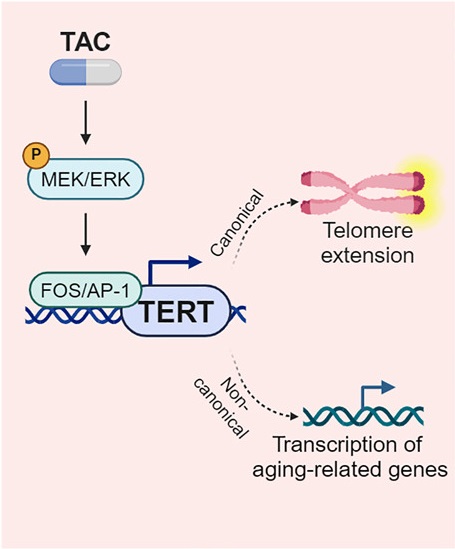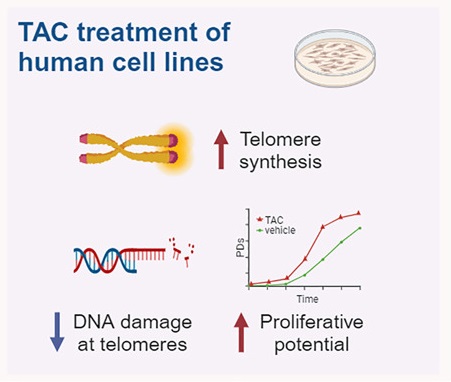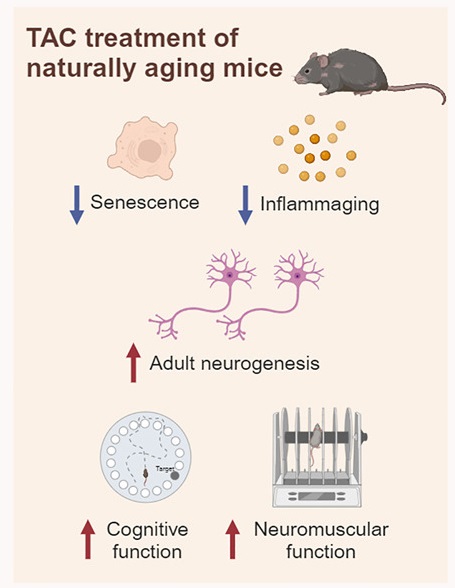Researchers at The University of Texas MD Anderson Cancer Center have discovered a breakthrough method of reducing the signs and symptoms of aging by restoring ‘youthful’ levels of a telomerase enzyme subunit in preclinical models. If the findings are confirmed in clinical trials, this method could revolutionize the treatment of age-related diseases such as Alzheimer’s, Parkinson’s, heart disease, and cancer.

The study identified a small molecule that restores physiological levels of telomerase reverse transcriptase (TERT), a protein typically repressed as we age. Restoring TERT levels led to reduced cellular senescence, decreased tissue inflammation, and even spurred new neuron formation. Improvements in memory, strength, and coordination were noted in aged lab models treated with this compound.

TERT’s role extends beyond its traditional function of maintaining telomeres, the protective caps on chromosomes. It also acts as a transcription factor, influencing genes related to neurogenesis, memory, cellular aging, and inflammation. This broader function suggests that TERT has a more significant role in aging than previously thought.

Ronald DePinho, M.D., a professor of Cancer Biology and corresponding author of the study, highlighted that epigenetic repression of TERT plays a key role in the cellular decline associated with aging. By restoring youthful TERT levels, the researchers were able to reprogram the expression of genes tied to cognition and muscle performance, potentially reversing some aging symptoms.

Aging is marked by various epigenetic changes, including the shortening of telomeres, which destabilizes chromosomes. As telomeres become shorter, they trigger a DNA damage response that leads to cell senescence. These senescent cells release inflammatory factors, damaging tissues and promoting aging and cancer.

Telomerase, a protein complex responsible for extending telomeres, becomes less active with age due to the epigenetic silencing of TERT. The DePinho lab had previously demonstrated that reactivating TERT could reverse premature aging in models, suggesting that maintaining TERT levels could counteract age-related decline.

The researchers hypothesized that TERT has functions beyond telomere synthesis, affecting overall telomerase levels crucial for slowing the aging process. Observations of rejuvenated neurons and cardiac cells without cell division led to the idea that TERT influences broader cellular functions.

In a high-throughput screening, the researchers identified a small molecule that activates TERT by de-repressing its gene. This TERT activating compound (TAC) restored youthful levels of TERT in preclinical models, improving memory, neuromuscular function, and reducing inflammation.

TAC treatment in models led to increased neuron formation, improved cognitive test performance, and a reduction in inflammation. TAC also eliminated senescent cells and reversed sarcopenia, a condition where muscle mass and strength deteriorate with age, leading to enhanced physical performance.

While TAC shows promise in preclinical models, further studies are necessary to ensure its safety and efficacy in long-term treatments. The findings underscore the importance of understanding the molecular mechanisms driving aging, opening doors for potential drug targets to treat chronic age-related diseases.
References: “TERT activation targets DNA methylation and multiple aging hallmarks” by Hong Seok Shim, Jonathan Iaconelli, Xiaoying Shang, Jiexi Li, Zheng D. Lan, Shan Jiang, Kayla Nutsch, Brittney A. Beyer, Luke L. Lairson, Adam T. Boutin, Michael J. Bollong, Peter G. Schultz and Ronald A. DePinho, 21 June 2024, Cell.
DOI: 10.1016/j.cell.2024.05.048





